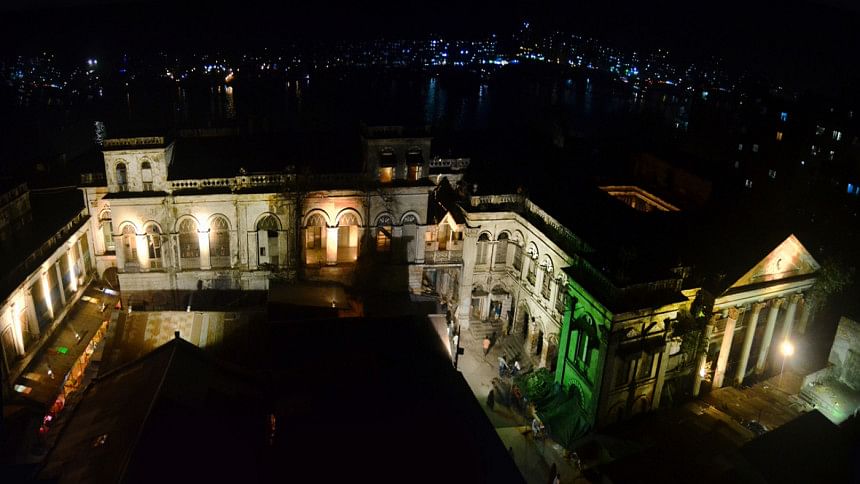Save Ruplal House (video)

During a long walk on the Buckland bund along the Buriganga, have you ever noticed an old and decaying yet majestic colonial architecture with a 400 meter long riverfront? If you have, you know what I am talking about- it’s the Ruplal House.
A Bengali babu Ruplal Das and his brother Raghunath Das bought this house from an Armenian zamindar named Aratun in 1835. The affluent brothers hired the famous architectural firm Martin and Company from Kolkata to renovate the property. It was renovated in the then popular neo-classical style.
According to Nazir Hossain, the writer of Kingbodontir Dhaka, Ruplal was the first from the Das family who went to school and scored highest numbers in the entrance exam, equivalent to present day SSC. He was also the most successful Bengali businessmen of his time. This period in history witnessed the gradual rise of the merchant class and the demise of the landed class. Ruplal House and Ahsan Manzil were the ornaments of the city, set along the river Buriganga.
The famous mansion was also the host of many important events in the nineteenth century in the city, including the legendary reception for the Vice Roy to India, Lord Dufferin in 1888. The elites of the city competed against each other to earn the privilege to honour the Vice
Roy and the Nawabs of Dhaka also wanted to show off their Ahsan Manzil. But the Ruplal brothers won this competition against the Nawabs. Legend has it that to show off their social status they spent 45 thousand takas at that time to decorate the whole building. One reason for selecting Ruplal House may have been the mansion's ballroom that overlooked the beautiful river.
"Its river-facing ballroom presents a unique view of the river. We found the same architecture in only the Ahsan Manzil," said Taimur Islam CEO of Urban Study Group.
Mr Ruplal was a well known promoter of classical music. He invited famous Indian artistes like Ustad Alauddin Khan, Wali Ullah Khan and Lakshmi Devi to perform in Ruplal House.
However, Ruplal House did not fare as well as Ahsan Manzil. You can now see only a small part of the building from the river and the mansion lacks proper maintenance with portions of the building now being used as a spice market and warehouse. In fact many of us don't know that Ruplal House is one of the country's largest buildings constructed during the colonial period.
The Das family's extravagant lifestyle didn’t last for long. During the earth quake of 1897, a part of the house was damaged. The family moved out to other places nearby and migrated to Kolkata during partition in 1947-- swapping the property with the Jamall family. However the Jamalls also did not stay in the Ruplal house for long. They left Bangladesh in the sixties. Since then many people have claimed its ownership but the matter remains unresolved.
Now left uncared for, the Ruplal House has lost its beauty. Commercial structures have come up defying the Antiquities Act’s condition of 250m buffer zone for an archaeological site. New structures are built just beside Ruplal House which is now surrounded by many shops. There are even some wholesale shops inside this building. Taimur says, "We are surprised to see structures being built within 50 meters of the much-talked about Ruplal House. Neither the department of architecture nor the RAJUK takes any action to save this architecture."
Ruplal House is a treasure of the past that demands care and preservation. This fantastic heritage site can only be protected if the government turns it into a cultural centre or a large office building, activists suggest.

 For all latest news, follow The Daily Star's Google News channel.
For all latest news, follow The Daily Star's Google News channel. 








Comments